You may be a Motion Designer, a 3D Artist or a hobbyist. Either way, the founding principles of traditional animation are an important area of study. Traditional 2D-style animation can be a great way to gain a deeper understanding for the mechanics of animation. It can also be a great way to level up your skill set.
When working on the computer, it its easy to get caught up in keyframes and interpolation. Traditional animation doesn’t have automatic interpolation per se, but it isn’t too dissimilar.
That’s because most of the functions we use on the computer come from traditional animation. Traditional animation is the grandfather of the workflows we now all use on the computer. The computer’s “keyframe” is a keyframe artist, who develops the “key” poses for an animation. The computer’s interpolation between the keyframes is called an in-between artist in traditional animation. This is the person who fills in drawings more between the key drawings.
If you want to study some aspects of traditional 2D animation, I’ve collected a list of resources that you can dive into. Broken down into books, and courses that can round-out your reference library.
LesterBanks is a participant in the Amazon Services LLC Associates Program, an affiliate advertising program designed to provide a means for sites to earn advertising fees by advertising and linking to Amazon.com. Help keeping the site going!
PRINCIPLES OF ANIMATION
The Animator’s Survival Kit
The Animator’s Survival Kit has been a best seller for good reason. It s the definitive book on animation for people of all skill levels. The book is by Richard Williams who is the award winning force behind “Who Framed Roger Rabbit”.
The book lays-out everything you need to know on animation, with some beautifully illustrated examples. It is an invaluable reference for any 2D / 3D animator or motion designer. If you are working with pen to paper, or paths and keyframes on the computer, The Animator’s Survival Kit is a must have.
You can get the book in a couple of formats. Although missing from Kindle, the book comes in both hardcover and paperback.
Or, if you are really serious, The Animator’s Survival Kit Animated is an amazing 16 DVD box set.
There is also an iBooks version that has some nice interactive features.
If you don’t have any of the versions and you want to animate, you need to get The Animator’s Survival Kit.
The Illusion of Life: Disney Animation
Sometimes to move forward you must look back. This is especially true by studying animation from the greats. There is no greater than classic Disney animation.
The Illusion of Life covers all the basics, such as the principles of animation, appeal and dynamics. It also rounds out wider scope by offering the history with the forefathers of animation. The book also covers character development, acting and emotion and other animation concepts and mechanics.
The Illusion of Life was an out-of-print collector’s item since 1986, but since then the book is a comeback. Definitely a value-add to any animator’s collection.
Check out The Illusion of Life: Disney Animation.
Timing for Animation
Timing can covey a lot of things. Weight, mood, even power. This is why one of the best things any animator can do is to study timing charts. A simple representative tool for quickly working out movement, the timing chart is priceless. There was no better resource that the little Timing For Animation book.
There are plenty of illustrations and direction in this small package of a book, from John Halas, Harold Whitaker and Tom Sito.
The book gives you an understanding the relationships between drawings or keys. It can answer how much spacing should be used? How long should each pose be? And much more.
The updated second edition includes mechanics for digital production. Including storyboarding in 2D, storyboarding in 3D, and using After Effects.
Check out the book Timing for Animation.
Elemental Magic Volume 1 & 2
If you work in motion design, then you know the importance of a little sizzle here and there. Pops, lighting strikes, magical transitions, smoke, fire or rippling water. Elemental Magic covers Animator Joseph Gilland’s philosophies and techniques for creating and animating special effects. Gillian is a former Disney animator, specializing in animated effects.
You can begin to learn how to create classical hand drawn animated effects. This is a great book to help you start growing your library of animated effects that you can use in your daily work.
Check out Elemental Magic Volume 1 and Elemental Magic Volume 2.
Character Animation Crash Course
Like the Animator’s Survival Kit, Eric Goldberg’s “Character Animation Crash Course” is a detailed analysis of animation techniques. Not as well known as ASK, this book is definitely a great addition to any animator’s library. The companion website offers animated examples that show the author’s animation principles and techniques at work.
Pick up a copy of Character Animation Crash Course to round out your reference library.
DRAWING AND REFERENCE
Simplified Drawing for Planning Animation
Wayne Gilbert’s Simplified Drawing for Animation is another must-have book for animators and artists in all fields. The book has been required reading for a number of schools, and is used by animators at ILM, Disney and EA.
There is plenty of information within on drawing the human form in a simplified way. The book places emphasis on structure, balance, and posing for sequential images.
Check out Simplified Drawing for Planning Animation.
Cartoon Animation
Preston Blair’s Cartoon Animation is an amazing reference. The book covers how to create compelling cartoon characters, create movement, and coordinate dialog with the action. Cartoon Animation is a valuable resource for both beginners and professionals alike.
Check out Cartoon Animation as an animation and drawing resource.
Force: Dynamic Life Drawing for Animators
Learn to use shape, rhythm, and line to bring life to any drawing. Create appealing and dynamic poses in your drawings and experience the figure’s energy in three dimensional space. The “Force” series is a practical guide to dynamic drawing techniques, packed with amazing examples.
Check out the book, Force: Dynamic Life Drawing for Animators.
There is also a book for animal locomotion, Force: Animal Drawing: Animal locomotion and design concepts for animators.
Modern Cartooning: Essential Techniques for Drawing
Modern Cartooning is aimed at beginners. This is the perfect entry way to learn an easy approach to cartooning. If you wanted to get started with creating and animating your own characters, this is a great starting point.
Check out Modern Cartooning: Essential Techniques for Drawing.
Figure Drawing: Design and Invention
Figure Drawing: Design and Invention is an instructional figure drawing book with focus for beginners and experienced artists. It offers a great foundation and covers simplified surface anatomy.
Check out Figure Drawing: Design and Invention.
Figure Drawing for All It’s Worth
Illustrator and Author Andrew Loomis’ book is an amazing figure drawing reference book. Figure Drawing is the first in Titan’s program editions, returning this classic titles to print for the first time in decades.
Check out Figure Drawing for All It’s Worth.
The Human Figure in Motion
Everyone should be familiar with Muybridge’s sequences of photographs. They make a great base reference manual for any artist or animator. The Human Figure in Motion offers 4,789 photographs, it illustrates some 163 different types of action. This book is the first go-to reference book for a lot of people.
Check out The Human Figure in Motion, and the companion book,.Animals in Motion.
Principles and Science of Creature Design
Terryl Whitlatch helped to create creatures for Star Wars. Now he can help you lay the foundation for believable and realistic creature anatomy and design. The book is an amazing reference for creating anatomy and practical application to natural history. Essential in having viewers suspend their disbelief.
Check out the book Science of Creature Design: understanding animal anatomy, and the companion,.Principles of Creature Design: creating imaginary animals.
ANIMATION PRODUCTION
From Word to Image, 2nd Edition: Storyboarding and the Filmmaking Process
Having an idea but not being able to translate it into something is like not having an idea at all. This is why for animator’s and motion designers, storyboarding is an essential step in the process.
From Word To Image offers an in-depth look at the storyboarding process. It shows how you can develop standardized frames and notation for shots and camera moves before any production takes place. I have this one on my must-have list.
Check out.From Word to Image, Storyboarding and the Filmmaking Process.
Storyboarding: Turning Script to Motion
Another storyboarding resource is one by Stephanie Torta and Vladimir Minuty. Storyboarding: Turning Script to Motion is a great resources as it uses accompanying video to show the boards along side a final short film and script. This is a really great way to understand practical storyboarding solutions and concepts instantly.
Check out STORYBOARDING Turning Script to Motion.
Storyboarding Essentials: SCAD Creative Essentials
Rounding out the art of storyboarding is one developed as a resource guide at Savannah College of Art and Design.
The Storyboarding Essentials book covers everything both students and professionals need to master the art of writing and formatting scripts, creating frames, and following visual logic to create a cohesive narrative.
Check out Storyboarding Essentials: SCAD Creative Essentials.
Animated Storytelling: Simple Steps For Creating Animation and Motion Graphics
Animated Storytelling almost acts as a bridge between an idea and a plan of execution. The book is a valuable resource for writing a creative brief, story structure, using color, and defining rules with 10 simple guidelines.
The guidelines take you through a journey of concept development, pre-production, storyboarding, and design. All with the goal of simplifying the process for creating clear and engaging stories for animation and motion graphics. Really good stuff here!
Check out Animated Storytelling: Simple Steps For Creating Animation and Motion Graphics.
Painting With Light
Painting With Light is one of my favorite books, even though its focus is for cinematographers.
The book is a really good way to learn lighting for animation and drawing, even 3D work.
The author, John Alton was a master craftsman of light in the 1940s and 1950s. Learning the classic styles and techniques goes a long way for digital lighting for animation and motion graphics.
This is why I always highly recommend.Painting With Light.
The Five C’s of Cinematography
If you plan to string together any sequence of animated shots, you best understand the fundamentals of compositional rules and cinematic time and space.
Again, why not learn from the classics, with the aid of photographs and diagrams. The 5 C’s are simple concepts that can take you a long way in visual storytelling. Camera Angles, Continuity, Cutting, Close Ups, and Composition!
Check out The Five C’s of Cinematography.
Film Directing Shot by Shot
Film DirectingShot by Shot is another resource that sounds like something that wouldn’t immediately be on a motion artist’s list, but it is an amazing reference. Think of it as a complete catalog of motion picture techniques.
This graphic approach includes comparisons of style by interpreting a ‘model script’, created for the book, in storyboard form.
Check out Film Directing Shot by Shot.
Film Directing Cinematic Motion
Where Film Directing Shot by Shot is all about blocking the scenes, it’s companion, Film Directing Cinematic Motion is a great resource for learning how to stage entire scenes.
The book runs through how to create an extended sequence shots, elaborate moving camera choreography, and tracking shots with multiple story points. All great stuff for Motion design and animation.
Check out Film Directing Cinematic Motion: A Workshop for Staging Scenes.
Production Pipeline Fundamentals for Film and Games
Production Pipeline Fundamentals is a great resource that walks through the production pipeline. The book covers everything from infrastructure to software development practices, asset, shot and rendering management.
Check out Production Pipeline Fundamentals for Film and Games.
ANIMATION BUSINESS
Graphic Artist’s Guild Handbook of Pricing and Ethical Guidelines
The Graphic Artist’s Guild releases a new handbook every so often. Understandably, the volume doesn’t sound like something of value to an animation or motion artist. Don’t let the name fool you — This is an amazing reference for business dealings, ethical practices, and legal issues. There is pretty much everything you need from industry wage examples, example contracts for a variety of jobs and projects, and legal rights and issues. This includes resources for cartoon artists, designers and animators. Really an amazing book to have at hand.
Check out the Graphic Artist’s Guild Handbook of Pricing and Ethical Guidelines.
Animation Development: From Pitch to Production
Animation Development is a seasoned professional bringing insights to the art of creating the perfect pitch. David B. Levy touches on almost every aspect of the pitching process. This includes preparation, hope, rejection, success. The book wraps up valuable experience and delivers a comprehensive guide for the industry and the process.
Check out Animation Development: From Pitch to Production.
Before Ever After: The Lost Lectures of Walt Disney’s Animation Studio
BEFORE EVER AFTER offers some great insights into the preparation that was behind the animated classic, Snow White. It is a compilation of never-before-seen lecture notes from classes from the on-campus art school for Disney staff at the time. Interesting right?
Check out Before Ever After: The Lost Lectures of Walt Disney’s Animation Studio.
The Visual Effects Producer: Understanding the Art and Business of VFX
The Visual Effects Producer is another one of those indispensable books that makes you feel better just to have around. This has everything from preproduction planning right down to legal issues and contracts, with everything else in-between.
The Visual Effects Producer: Understanding the Art and Business of VFX is another resource for the “must-have” box.
ANIMATION COURSES
Mastering 2D Animation
https://www.udemy.com/2d-academy-animation-101/
Award-winning master animator, author and teacher Tony White offers 29 outstanding online tutorials on the core principles and techniques of 2D animation. Through extensive illustrated text-based lectures and over 4 hours of over-the-shoulder, apprentice-style video tutorials
Pixar in a Box
https://www.khanacademy.org/partner-content/pixar
Pixar in a Box is a behind-the-scenes look at how Pixar artists do their jobs. You will be able to animate bouncing balls, build a swarm of robots, and make virtual fireworks explode. The subjects you learn in school — math, science, computer science, and humanities — are used every day to create amazing movies at Pixar. This collaboration between Pixar Animation Studios and Khan Academy is sponsored by Disney.
Explore Animation NFTS
https://www.futurelearn.com/courses/explore-animation
Learn animation techniques, including stop motion, 2D, CGI and pixilation, with award-winning animators, in this free NFTS course.
Narrative & Storytelling for Animation
https://www.udemy.com/narrative-storytelling-for-animation/
learn more about how to write, plan and design an idea for an animated gag. This course is for anyone who would like to learn the best practices for developing a short story, or gag, to be told in the form of an animation, and it’s free.
The Animation Course
http://www.theanimcourse.com/theanimcourse.html
Chad Stewart, former Disney animator offers live instructor driven courses with live 12 1-hour long lessons, aimed at 11-18 year olds. The company does offer recorded sessions for adult-aged students, with personal reviews still available. Check the site for more information.
Algorithms for Computer Animation – free
Animation is a compelling and effective form of expression; it engages viewers and makes difficult concepts easier to grasp. Today’s animation industry creates films, special effects, and games with stunning visual detail and quality. This graduate class will investigate the algorithms that make these animations possible: keyframing, inverse kinematics, physical simulation, optimization, optimal control, motion capture, and data-driven methods. Our study will also reveal the shortcomings of these sophisticated tools. The students will propose improvements and explore new methods for computer animation in semester-long research projects. The course should appeal to both students with general interest in computer graphics and students interested in new applications of machine learning, robotics, biomechanics, physics, applied mathematics and scientific computing.
FINAL WORDS
These are some of my favorite resources for animation professionals and students alike. Have I missed your favorite? Let me know in the comments below!
LesterBanks is a participant in the Amazon Services LLC Associates Program, an affiliate advertising program designed to provide a means for sites to earn advertising fees by advertising and linking to Amazon.com. Help keeping the site going!

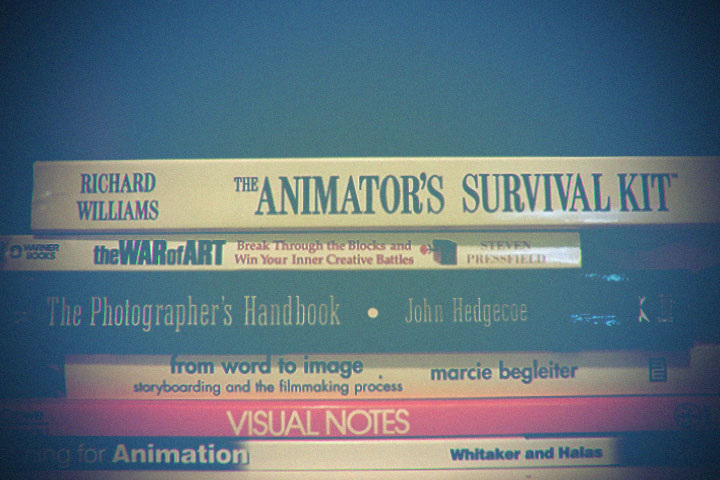




























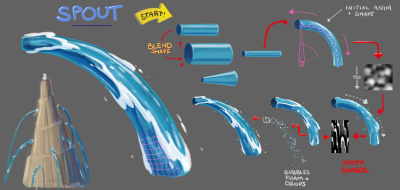
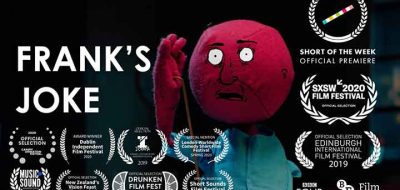
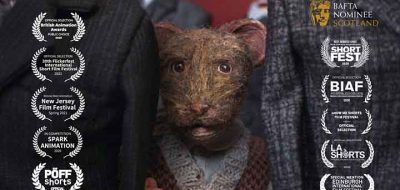
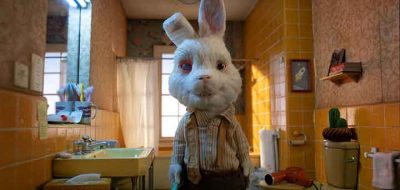
Alicia
Classic Human Anatomy by Valerie L. Winslow
https://www.amazon.com/Classic-Human-Anatomy-Function-Movement/dp/0823024156/ref=sr_1_1?ie=UTF8&qid=1477934334&sr=8-1&keywords=Classic+Human+Anatomy%3A